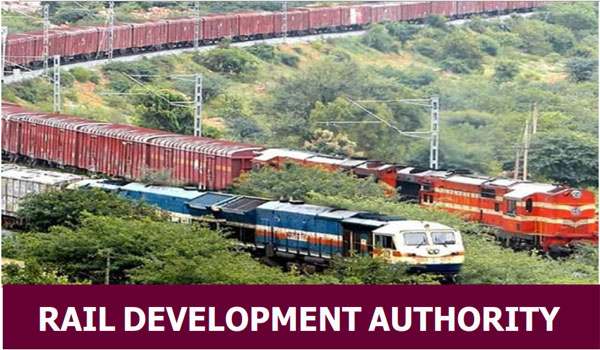(FREE) UPSC Current Affairs 2025 PDF
NEW! The Gist (OCT-2025) | E-BOOKS
RAIL DEVELOPMENT AUTHORITY: Civil Services Mentor Magazine: MAY - 2017
::RAIL DEVELOPMENT AUTHORITY::
Indian Railways (reporting mark IR) is a state-owned railway
company, responsible for rail transport in India. It is owned and operated by
the Government of India through the Ministry of Railways. It is fourth largest
railway network in the world comprising 119,630 kilometres (74,330 mi) of total
track. Railways first introduced to India in 1853 from Bombay to Thane. In 1951
the systems were nationalised as one unit, the Indian Railways, becoming one of
the largest networks in the world. The working of Indian Railways is caught up
between making it a selfsufficient organisation and serving it as a transport
system for the poor. Indian Railways spends heavily on revenue expenditure -
there is little left for capital expenditure. As part of the radical rethinking
on improving the transportation architecture, the government did away with the
separate railway budget, merging it in the Union budget. In order to overcome
some of these challenges mentioned above government has also come up with Rail
development Authority.
The need of having a rail regulator has been emphasised by various committees for past many years since 2001. Expert Group under the Chairmanship of Rakesh Mohan in 2001, the NTDPC in 2014 and Bibek Debroy's Committee in 2015 said about coming up with rail devlopment authority to look into various issues of the railways. Budget 2015-16 announced it is important to have a regulation mechanism independent of the service provider for overall development of railways. Budget 2015-16 proposed to set up a mechanism for making regulations,setting performance standards and determining tariff.
Composition of RDA
Rail development authority is considered to be the biggest and first-of-its-kind reform in the rail sector. The Rail development authority will be formed through an executive order of the government. Its composition is given below:
-
The Authority will have a Chairman and 3 members and can engage experts from relevant areas.
-
The Chairman and the members of RDA will have a term of 5 yrs.
-
An initial corpus of Rs 50 crores will be provided for setting up the organisation.
-
The appointment of the Chairman and members will be done by the central government from the panel of names recommended by the Search and Selection Committee
Functions of RDA
The long-awaited regulator will perform four primary functions-tariff determination; ensuring fair play and level playing field for stakeholder investment; setting efficiency and performance standards; and dissemination of information. The regulator, to be headed by a chairman and comprising three members, will have a five-year term and be empowered to engage experts.
-
Recommendations of RDA are not binding on the government
-
Benchmark efficiency parameter for Indian railways
-
Recommend guidelines and principles for tarrif settings
-
Suggests measures of technology Adoption and implementation
-
Deriving guidelines for classifying commodities fare as well as the class
-
Proposing modifications and suggesting advisory noteson PPP investment
-
Ensuring reasonable safeguard to PPP investors
-
Ensuring fair and level playing field for stakeholder investment in railways
-
Dispute reduction in future concessions agreements
-
RDA will help the government to take appropriate decisions on pricing of services commensurate with costs
-
It will suggest measures for enhancement of non-fare revenue


